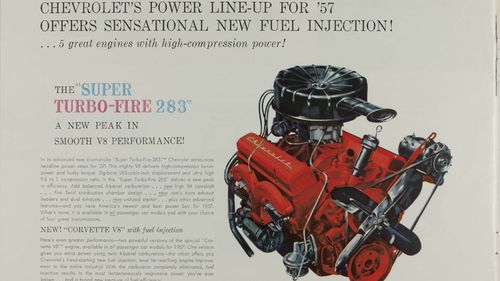10 Major Car Technology Breakthroughs Over the Last 75 Years
The automobile’s golden age is here, with modern vehicles boasting unprecedented power, efficiency, and safety features. The journey to this point was paved by numerous technological advancements that debuted in luxury cars before becoming mainstream. Let’s explore the top 10 automotive innovations of the past 75 years that revolutionized the industry.
1. Fuel Injection
Fuel injection technology has its roots in Henry Ford’s 1901 ‘Sweepstakes’ race car. However, it wasn’t until the 1970s, with the introduction of computer-controlled systems like Volkswagen’s 1968 model, that fuel injection became more precise and widely adopted. American manufacturers soon followed, making carburetors obsolete by the early 1990s.

2. Cruise Control
Introduced by Chrysler in 1958 as ‘Auto-Pilot’ and later popularized by Cadillac’s ‘Cruise Control,’ this feature became mainstream in the 1970s during the oil crisis. It improved fuel efficiency by maintaining consistent speeds on long drives.

3. Turbochargers
Turbocharging, which uses exhaust gases to compress air, dates back to World War II aircraft. Automakers adopted this technology in the 1960s, with GM offering turbochargers on the Corvair Monza and Oldsmobile Jetfire in 1962. Modern turbochargers help achieve better fuel efficiency while maintaining power.
4. Antilock Brakes
Introduced by Ford in 1969 and later improved by Mercedes in 1978 with digital controls, antilock braking systems (ABS) prevent wheels from locking up during hard braking. ABS became mandatory in the U.S. in 2012, making winter driving safer.

5. Catalytic Converters
To combat growing air pollution, catalytic converters were introduced in the 1970s. These devices convert harmful pollutants into less harmful substances. Most U.S. gasoline-powered cars began using them in 1975 to meet emissions standards.

6. Computer-Controlled Engines
The partnership between Ford and Toshiba in 1974 led to the development of electronic engine controls. This innovation improved performance, reduced emissions, and paved the way for onboard diagnostics.

7. Seat Belts
Nash introduced optional seat belts in 1949, but it wasn’t until the 1968 model year that they became mandatory in the U.S. Public awareness campaigns in the 1980s increased their usage, saving an estimated 375,000 lives since 1975.

8. Airbags
First patented in 1953, airbags began appearing in American cars in the early 1970s. Chrysler led the way by standardizing them in 1988. By 1998, dual airbags became mandatory in all U.S. cars and light trucks.

9. GPS/In-Car Navigation
The introduction of GPS technology in the 1980s enabled effective in-car navigation. Mazda first introduced GPS-based navigation in 1990 in Japan, followed by General Motors in the U.S. in 1995. Modern systems now offer real-time updates and traffic information.

10. Advanced Driver Assistance Systems
Technologies like adaptive cruise control and lane departure warnings first appeared in premium cars in the 2000s. These systems use radar, lidar, and internal sensors to enhance safety and pave the way for potential full autonomy in the future.

These innovations have transformed the automotive landscape, making vehicles safer, more efficient, and more powerful. As technology continues to evolve, we can expect even more groundbreaking advancements in the years to come.



